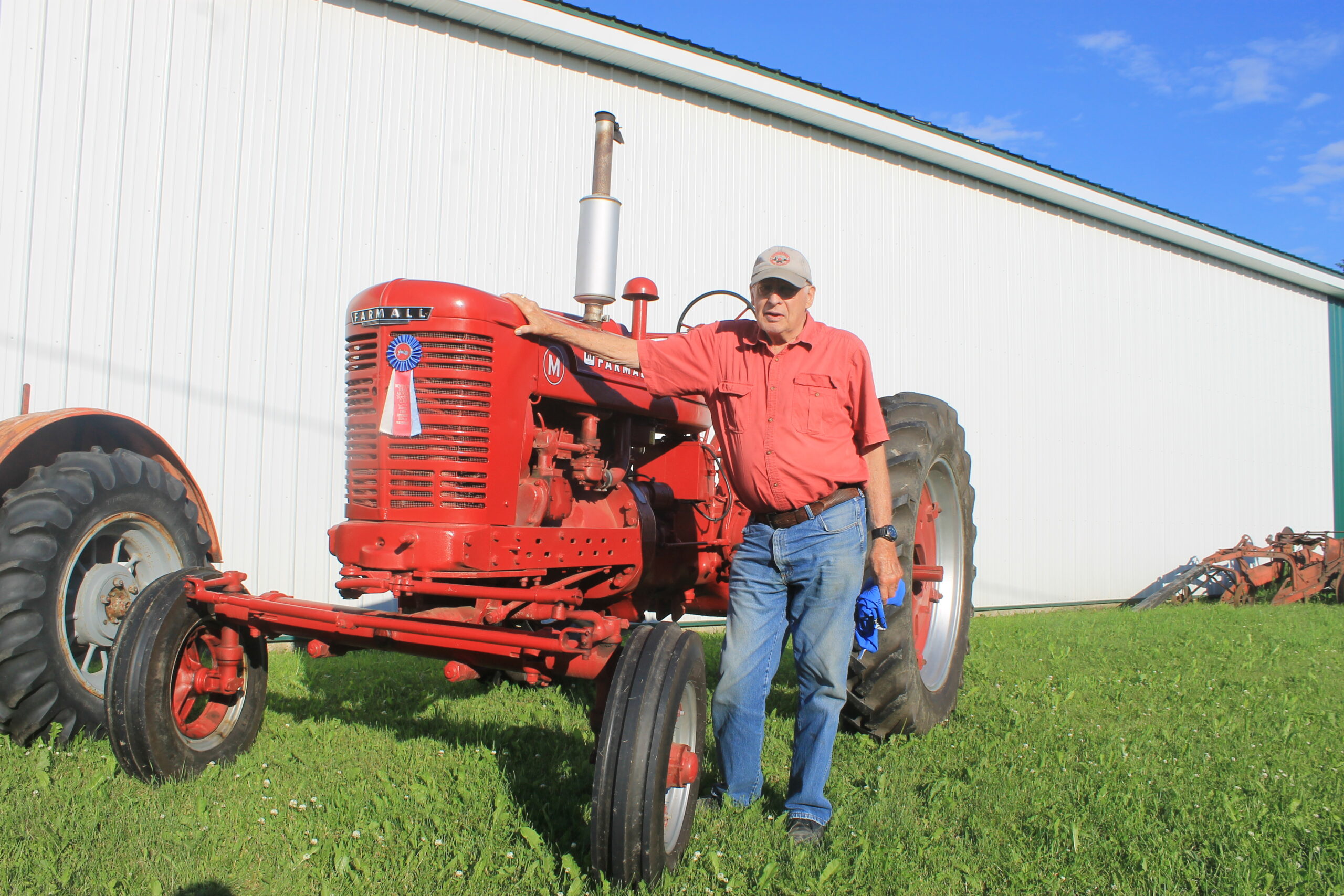
PRESQUE ISLE, Maine — Every year, a group of volunteers shows visitors at the Northern Maine Agricultural Fair some of Aroostook County’s farming evolution at the Agricultural Heritage Building.
On display and sometimes in demonstration at the Agricultural Heritage Building are old tractors, potato planters and diggers, grain drills and hay-making tools, saws and more.
While modern equipment costing hundreds of thousands of dollars greet visitors elsewhere, the ag heritage exhibit gives people a sense of the hard labor and know-how that made Aroostook County a top potato producer.

Antique farm equipment, including a mystery tool, on display at the Northern Maine Fair.
(Anthony Brino)
“We try to put together all the old farm equipment that isn’t used now so people can see what farming was like years ago before they had all the new modern equipment and big tractors,” said Charles Currier, a retiree and former farmer from Mapleton who helps organize the exhibit with the Northern Maine Antique Tractor Club.
“Back then it was totally different. It used to take a farmer two or three weeks depending on the weather to plant 60 or 70 acres. Now they do that much in a day, or more. They’ll plant even a couple hundred acres a day. We hope people come away with knowledge of what farming used to be like. A lot of people today don’t realize what this equipment is,” he said.
Currier grew up on a potato farm in Mapleton and worked his own farm until the late 1970s.
“My father died in 1950 and my mother kept on farming until I got old enough to take over the farm,” Currier said, recounting how his father died from the combination of pneumonia and a heart attack.
“I was 10 years old when Dad passed. I was the oldest and I had one younger brother. We had a hired man who started out working for Dad and he kept on working for Mother. He was a real dedicated help and he brought me up and taught me just like a father would.

The Northern Maine Fair’s Agricultural Heritage exhibit offers fair-goers a look into the past of farming in Aroostook County.
(Anthony Brino)
While Currier’s late father farmed with horses, his generation saw the transition to small and then large tractors and mechanized equipment.
“I’ve used just about all of the equipment in here,” Currier said of the exhibit. “That two-row planter is like the one we had. I’ve planted a lot of potatoes with that. And we used to have one of those little one-row harvesters.”
“We started out with a Farmall F-20,” he said of the family’s early tractors. “Then in 1952, we bought a Farmall M. In 1955, I bought a Farmall Super C. After I quit farming, I sold the Super C. I wished I hadn’t. I regretted it ever since I did it.”
The 1952 Farmall M, with a horsepower range of less than 40, is still with Currier, well-kept and little used aside from displays at the fair.
Currier has also kept other antique equipment, including a mystery tool that he’s asked fair-goers to help identify.
“From the time I was a kid, it was up overhead in our machine shed and I didn’t know what it was,” Currier said of the tool. “So I brought it down here and put a sign on it: Can anybody tell us what this was? Somebody said they thought it was some kind of grinder. You could pedal it and there would be a chain that run up to turn the grinding wheels.
“We still can’t say for certain what it is.”







